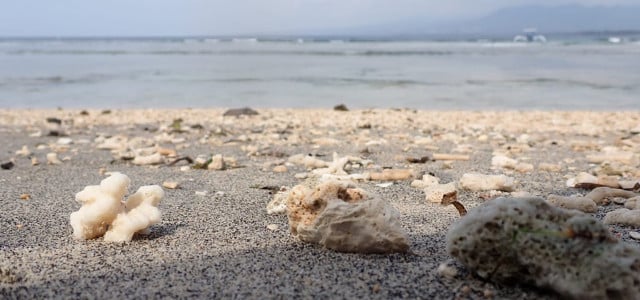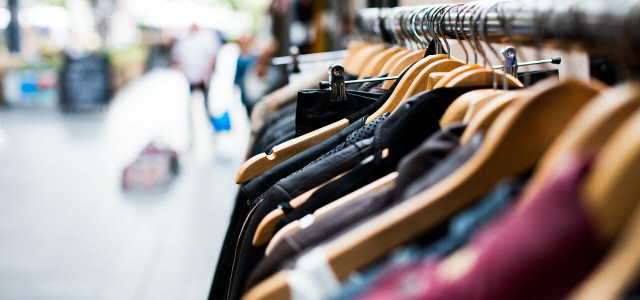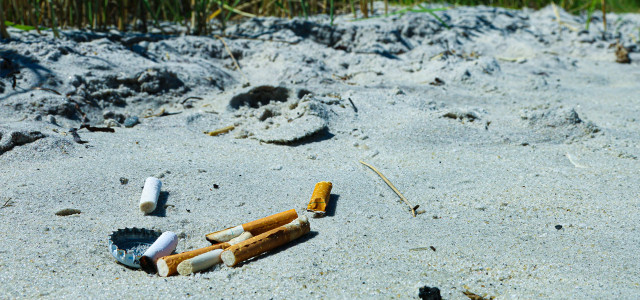Microplastics aren’t only in exfoliating face wash and shower gel. Many everyday products release microplastics into the ocean via tiny plastic particles. Here are some surprising items that cause microplastic pollution in water.
Fortunately, people are gradually becoming aware of the endless array of microplastics in cosmetics and personal care products. However, many microplastics in the ocean and other ecosystems originate from other, more surprising sources. These causes of ocean microplastic pollution can be easily avoided — but only if you know about them!
For more information and practical tips, check out:
- Microplastics: New Studies a Cause of Concern
- Microplastics in Food: What the Heck?
- Plastic in the Ocean: What Can I Do About Plastic Pollution?
1. Clothes With Synthetic Fibers
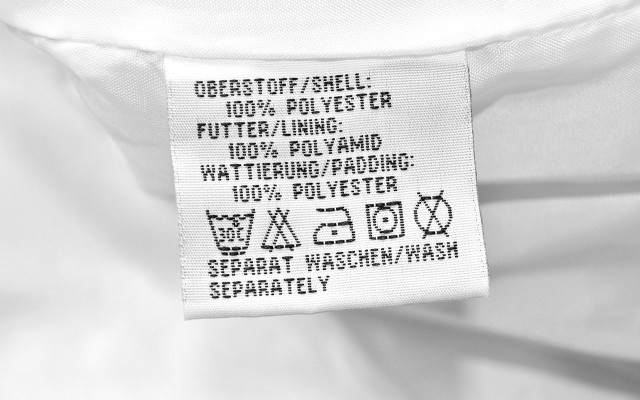
Every time we wash shirts, jackets or sweatpants made of synthetic materials, they shed tiny plastic fibers. It’s not yet possible to effectively filter these microfibers from wastewater — your washing machine can’t do it, and neither can local water purification methods.
It’s not just sportswear or fleece garments; a massive number of clothing items are laced with synthetic fibers. T-shirts, hoodies, leggings and socks — microplastics are particularly common in the discount clothing and fast fashion industries. Why? Synthetic fibers are cheap.
Always have a closer look at the tag. If you find any mention of polyester, polyamide, polyacrylics, nylon, spandex or microfibers, that’s your signal to move on. There are more sustainable options out there.
It’s likely you, too, have at least some synthetic clothing. Be sure to wash these only as needed — as little as possible — and use a gentle clothes soap, like this homemade laundry detergent. A 2016 study determined that fabric softeners might lead to the release of an even greater number of microfibers, and as it is, fabric softeners aren’t exactly good for the environment.
Play it safe by avoiding it altogether, making your own homemade fabric softener or purchasing an eco-friendly fabric softener substitute. With a bit of care, it’s easy to avoid contributing to microplastics in the ocean.
2. Car Tires: A Key Contributor to Microplastics in the Ocean
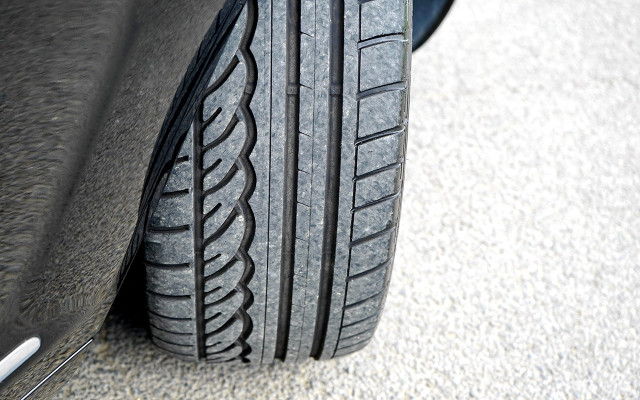


Car tires are made using a mixture of natural and synthetic rubber. In other words: plastic. Tires produced by Goodyear, for example, contain “up to 30 different kinds of rubber, fillers and other ingredients”.
At some point, tires start to wear out due to friction, pressure and heat. When tires break down, they release small particles that accumulate into “fine particle dust,” a massive contributor to air pollution. Wind and rain further transport these plastic particles from streets into the environment, where they enter waterways and eventually become microplastics in the ocean.
Studies show that this type of particle from tire wear significantly contributes to global microplastic pollution. An investigation conducted by the International Union for Conservation of Nature and Natural Resources (IUCN) determined that tire wear particles could potentially make up a quarter of all microplastic waste pollution in the environment today. Together with synthetics in clothing, these polluters are responsible for the largest overall source of microplastics in the ocean and on Earth.
The solution? Sadly, the only option is to keep car rides to a minimum. Car and ride-sharing services or public transportation are efficient and sustainable alternatives to the popular habit of driving alone to and from work every day.
3. Glitter: Aluminum-Layered Microplastic



It’s a kids’ craft favorite and an integral part of music festival makeup choices. The majority of products marketed as glitter are made of, or contain, some amount of plastic. The tiny multicolored glitter particles are most often produced using plastic or plastic-layered aluminum. Once they make their way into the water, they pose a serious threat to ocean ecosystems.
To learn more about glitter and some eco-friendly alternatives, read What Is Glitter Made of and Is Bio-Glitter Better?
4. Cigarette Butts: A Major Source of Microplastics in the Ocean



According to a 2015 study, “Smoked cigarette filters are the predominant coastal litter item; 4.5 trillion are littered annually, presenting a source of bioplastic microfibres and harmful toxicants to marine environments.“ Discarded cigarette butts are the most commonly found trash on the coast and quickly become microplastics in the ocean.
In contrast to other forms of plastic waste overrunning the ecosystem, cigarette filters are, or should at least be, biodegradable. They’re made of cellulose acetate, a type of wood pulp.
Cigarette filters (depending on their chemical makeup) will eventually break apart and decompose naturally. How long this process takes depends on environmental factors and the specific materials used in production. It can take a while.
It’s what happens before cigarette filters decompose that’s the problem, at least where microplastics are concerned. The filters break apart and can be consumed by marine animals. In addition to bioplastic microfibers, used cigarette filters also contain plasticizers and additives — not to mention chemicals from the smoke itself.
Animals and organisms consuming these spent filters are ingesting poisonous material. Comprehensive research examining the effects on particular species and ecosystems has not yet been conducted. However, studies do support the claim that cigarette filters washed out to sea pose a serious threat to the health and development of marine life.
The problem: Even though cigarette byproducts are biodegradable, fibers and other poisonous byproducts are a danger to the environment that should not be taken lightly.
The solution: Everyone knows that smoking is neither healthy nor sustainable. However, smokers can still limit their impact on the environment by discarding of cigarette butts responsibly — in an ashtray or the garbage — and never on the ground.
5. Paint and Varnish



Paints and varnishes are two major contributors to microplastic pollution. Many of these products are produced using microplastic particles as binding agents, thickeners or for surface durability. The particles are released through the simple action of washing your brush or roller after painting.
Minute plastic particles are added to paints and varnishes in the form of chemicals like acrylpolymer, polyamide and polyacrylnitrile. According to industry experts, this is primarily the case with water-based paints for walls and ceilings. Microplastics in the ocean and elsewhere also come from ship and boat paints and other industrial sources, as well as road markings.
Whenever you use paints and varnishes, inform yourself about the chemical makeup of the product and filter out options with synthetic microplastic particles. There are a great many wall paints made without harmful chemicals, and they’re not that hard to find.
6. Microplastics in Cleaning Cloths and Dish Towels



Dishcloths and towels are often made of microfibers or other chemical-based fibers. Dish sponges are also produced with foam plastic and other plastics. They can lose fibers the same way clothing with synthetic fibers sheds material, eventually finding its way into rivers and contributing to growing levels of ocean microplastic pollution.
Cleaning with cotton towels or even fabric remnants is just as effective as using store-bought cleaning products. Some manufacturers even offer eco-friendly sponges made of cellulose or other natural fibers.
In addition to cleaning and dishcloths, linens and hand towels are also known to contain synthetic fibers. Be on the lookout for more sustainable products made of natural fibers like cotton. These cause fewer microplastics in the ocean and less lasting environmental damage.
Microplastics in the Ocean: Stay Vigilant
A number of other common household products contain microplastics that inevitably find their way into wastewater.
Many contain harmful and stealthy microplastics we can easily avoid, like face scrubs, clothes made from synthetic fibers, and glitter. Be mindful of the contents of the products you buy. Do some research before you shop to make it easier to find sustainable options, and check labels and tags carefully. When in doubt, you can always ask a salesperson for help.
Looking for an easier way to reduce your personal impact on the rise of microplastics in the ocean? Give our guide on Life Without Plastic a read and see for yourself how easy it is to eliminate “convenience plastic” from your daily life. Plastic-Free Shopping: 3 Easy Tips for Waste Reduction is also a great start.
Want to learn more about sustainability and the environment? Follow us on Instagram!
Read more:
- Go Plastic-Free: How to use Less in 7 Easy Steps
- 5 Unsettling Reasons to Avoid Melamine Dishes
- Plastic-Eating Mushrooms: They’re Real (& Some Are Edible)
Do you like this post?






